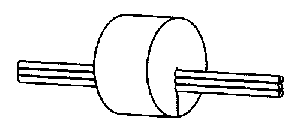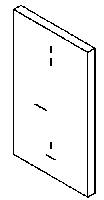The purpose of this document is to describe BAPI approved methods to control airflow in conduit, (conduit draft).
Airflow through conduit can lead to inefficiencies and contaminate the air the BAPI sensor is intended to measure. This problem can show up as a defective BAPI sensor leading to an unnecessary RMA. Also, some materials used to commonly deter airflow can affect the air around the BAPI sensor also affecting its accuracy.
In a wall-mount application the mixing of room air and air from within the conduit, (and wall cavity), can lead to condensation, erroneous readings and premature failure of the sensor. To prevent these conditions, seal the conduit leading to the junction box, seal the hole in the drywall and the sensor back/junction box surface.
Do Not Use Unapproved Materials
BAPI does not recommend the use of moisture cure caulks. Moisture cure caulks will alter critical humidity measurements, sometimes for years after installation and may damage the RH sensor. Moisture cure caulks include Silicone, RTV, Latex, Acrylic and Polyurethane caulk. Many other materials commonly used to inhibit air flow also emit VOCs that can show up as inaccurate readings for BAPI VOC sensors or emit heat as they cure affecting BAPI thermistors.
Use Approved Materials
Included with some CO2 and/or VOC sensors is a foam plug (BA/FOAMPLUG) to seal ½” EMT (see Figs 1 &2). Place the wires into the plug as shown and then insert the plug into the conduit sealing the box. This foam plug is approved in all BAPI installations for controlling airflow in ½” EMT.
Included with some pressure pick up ports is a foam plug to seal 3/8” EMT. Insert the plug as shown into the conduit sealing the box. This foam plug is approved in all BAPI installations for controlling air flow in 3/8” EMT.
Other approved materials for reducing conduit draft for non-VOC sensor applications are fiberglass building insulation, butyl-rubber, and poly-fill.
In wall-mount applications, a foamback insulator (BA/FOAMBACK, Fig 3) may be used as a second line of defense in reducing conduit airflow and its effect on the BAPI sensor. Make sure the foam insulator is compressed about 50%.
 Fig. 1: Foam plug with wires inserted |
 Fig. 2: Foam plug insertion into conduit. |
|
If you would like more in-depth information about controlling airflow in conduit, call your BAPI representative.




